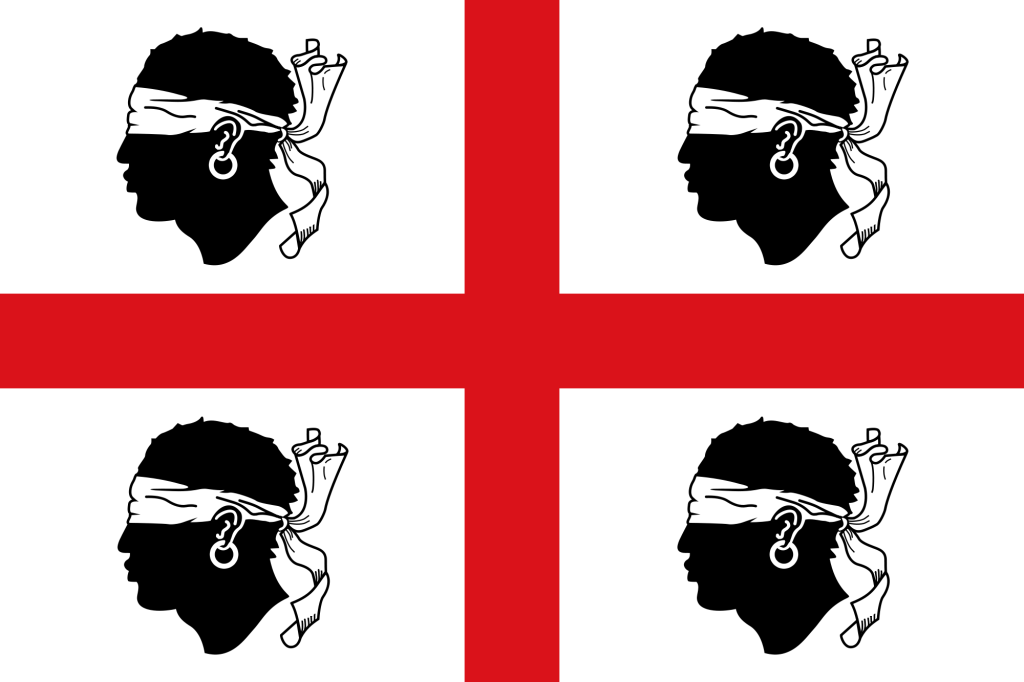
Sardinia’s Flag Four Beheaded NonWhites National Vanguard
Who Is On The Sardinian Flag? Written by Jason Matthew Warland in Popular The flag of Sardinia is intriguing and mysterious, much like its origin. The flag is known as 'I Quattro Mori' which translates to 'The Four Moors'. It consists of a red St Georges cross, with four back Moor heads positioned in each of the four partitions.

Kingdom of Sardinia (1848) Bandeiras do mundo, Sardenha, Geografia
The meaning of the flag of Sardinia have its deep roots in an ancient past soaked in legend and confirmed by the historical facts: the origin of the standard of the four Moors, symbol of Sardinia, is shrouded in mystery still today.

Sardinia — Yacht Charter & Superyacht News
Sardinia ( / sɑːrˈdɪniə / sar-DIN-ee-ə; Italian: Sardegna [sarˈdeɲɲa]; Sardinian: Sardigna [saɾˈdiɲːa]) [a] [b] is the second-largest island in the Mediterranean Sea, after Sicily, and one of the twenty regions of Italy. It is located west of the Italian Peninsula, north of Tunisia and immediately south of the French island of Corsica .
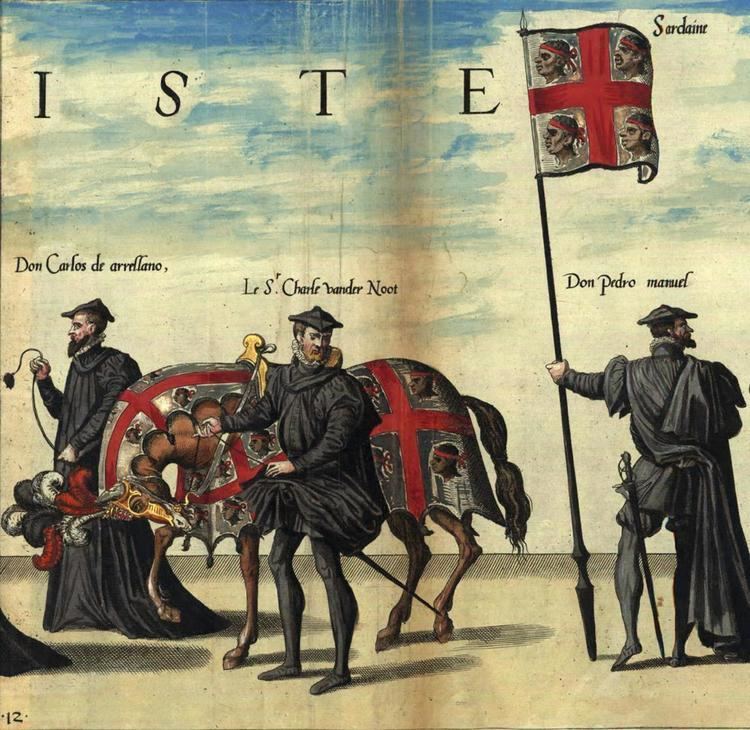
Flag of Sardinia Alchetron, The Free Social Encyclopedia
The Kingdom of Sardinia also referred to as the Piedmont-Sardinia during the Savoyard was a state in Southern Europe from the early 14th until the mid-19th century. Despite the name of the state, the island of Sardinia itself was a marginalized region. By the time of the Crimean War in 1853, the Savoyards had built the kingdom into a strong power.

Flag Sardinia Second Image & Photo (Free Trial) Bigstock
The flag even has a hashtag on Instagram, check it out #bandierasarda. The Sardinian flag is called 'The flag of the Four Moors' or simply 'The Four Moors'.. - The Latins called it Sardinia, meaning land of the Sardinians. This name was given by the Romans, who also established the province of Sardinia in 277 BC. - The Italians call.

Kingdom of Sardinia Scooxer. Ready to Use Graphics
Everything you need to know about the Sardinia Flag The Sardinia flag, also known as the "Flag of the Four Moors" or "Bandera de Sa Sardinia," is an important symbol of the island's history and culture. Featuring four moors' heads on a white background with a red cross of Saint George, the flag has its
Crossinception the SardiniaPiedmont union flag r/vexillology
Sardinia Flag GIF. (Bandiera della Sardegna) Sardinia's civil and state flag (Italian: Bandiera della Sardegna [Bandiera dei quattro mori]), also known as the flag of the Four Moors, consists of the St George's Cross and the four heads of the blindfolded Moors in the past. The most widely accepted hypothesis is that the heads represent the.
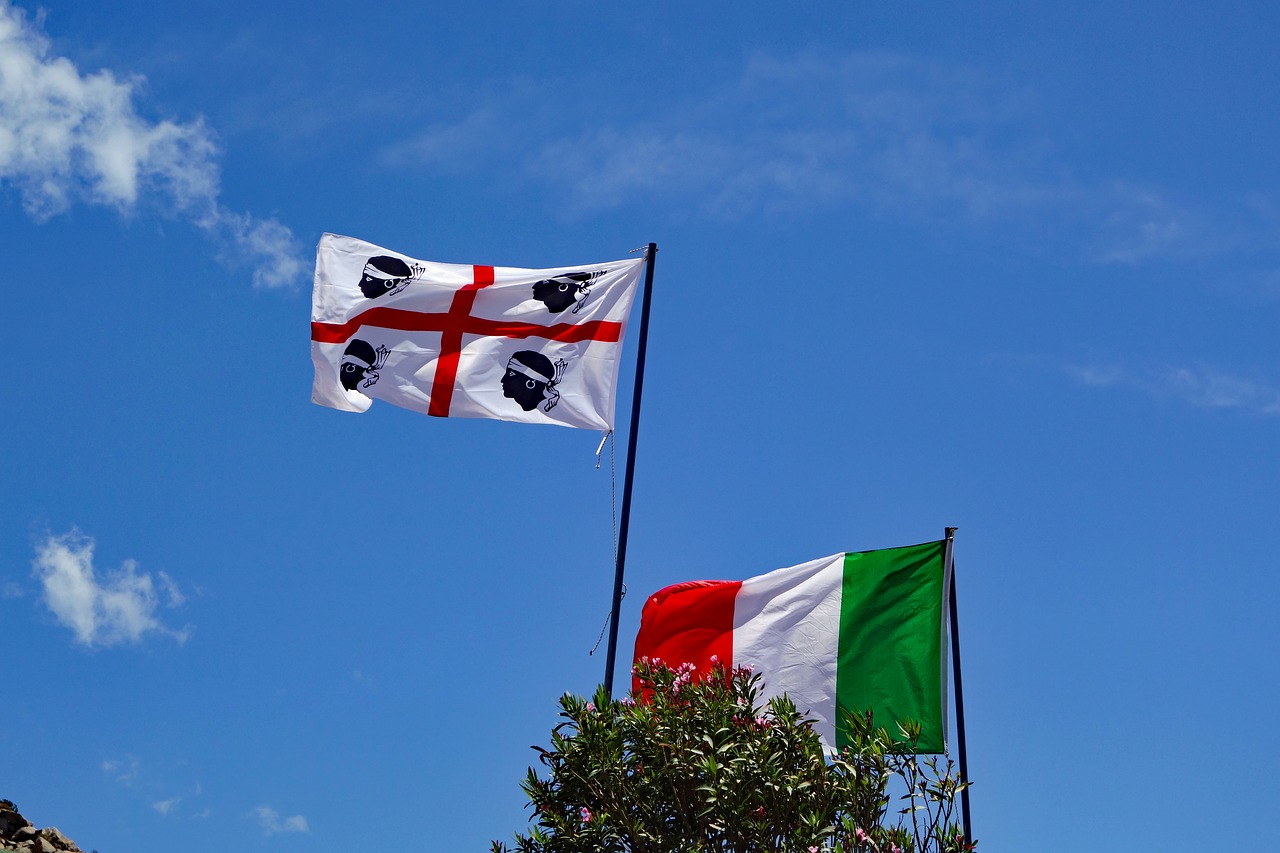
Sa die de Sa Sardigna, e la tenacia del popolo sardo anche
The flag of Sardinia, called the flag of the Four Moors or simply the Four Moors (Italian: I quattro mori; Sardinian: Sos bator moros in Logudorese or Is cuatru morus in Campidanese), is the official flag of the autonomous region of Sardinia, Italy, and the historical flag and coat of arms of the Kingdom of Sardinia.There are separate Spanish and Sardinian traditions to explain the origin of.

"Flag of Sardinia" Scarf by CountriesFlags Redbubble
Flag of the Sardinia, Source, by: Wikipedia (EN) Meaning/Origin of the Flag The flag of Sardinia shows immemorial, a red cross on a white ground , and in the four white areas per a moor's head. This peculiar symbol is known in Aragón, Corsica and Sardinia. It goes probably back to the Kingdom of Aragón, because this symbolism there has been.

Flag of Sardinian People The flag of Sardinia, popularly k… Flickr
The flag was later adopted by the other Giudicati and became the official flag of Sardinia after the island was conquered by the House of Savoy in the 18th century. Today, the Sardinian flag is a symbol of the island's unique history and identity and is an important part of Sardinian culture.

Sardinia In My DNA Proud Sardinian Flag Sardinia Sards Gift
Sardinia adopted on the 15th April 1999 the traditional flag of the island, that is white with a red cross and a black moor's head, with a white headband, above the eyes. An official model shall be adopted soon by the president of the region.

Sardinian Flag, Sardinia, Italy Stock Photo Alamy
The flag of Sardinia , called the flag of the Four Moors or simply the Four Moors , represents and symbolizes the island of Sardinia and its people. It was also the historical flag and coat of arms of the Aragonese, then Spanish, and later Savoyard Kingdom of Sardinia. It was first officially adopted by the autonomous region in 1950 with a revision in 1999, describing it as a "white field with.
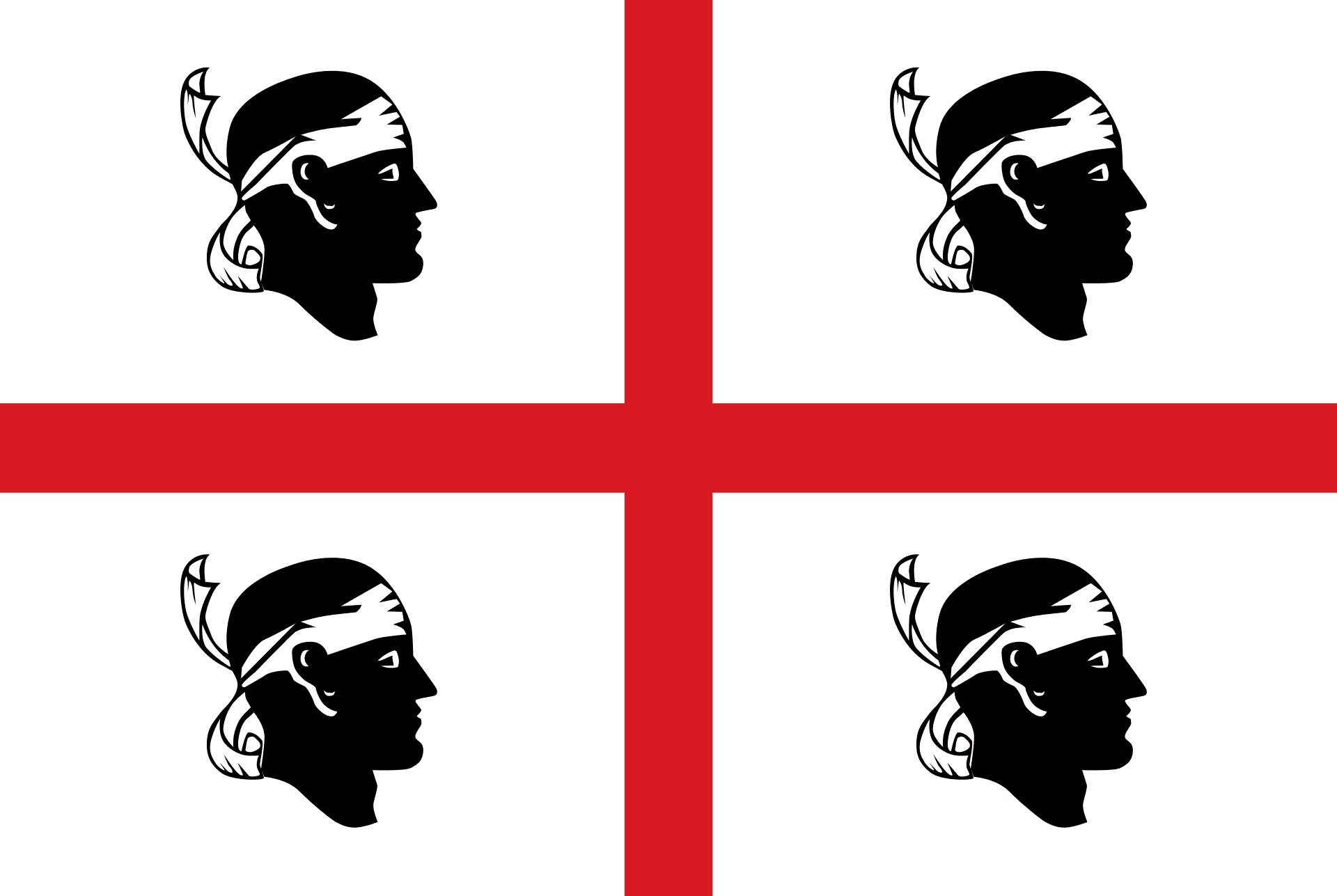
Flag_of_Sardinia.svg · Familias en Ruta
The Sardinia flag. Flags go beyond mere pieces of cloth adorned with vibrant designs; they frequently carry profound historical and cultural meanings. Today, we're diving into the world of flags, specifically the Sardinia flag. This Italian island's emblem is rich in history and symbolism. Let's unravel 13 fascinating facts about the Sardinia flag!

Flag Sardinia Second Image & Photo (Free Trial) Bigstock
The Sardinian flag consists of a red St. George's cross. In each of the four partitions, you can see a black head - that of a Moor, facing left in the old flag (pre-1999), or right in the more modern one. That's the basic about the flag of Sardinia, whose look - as we will learn in this post - slightly changed across time.
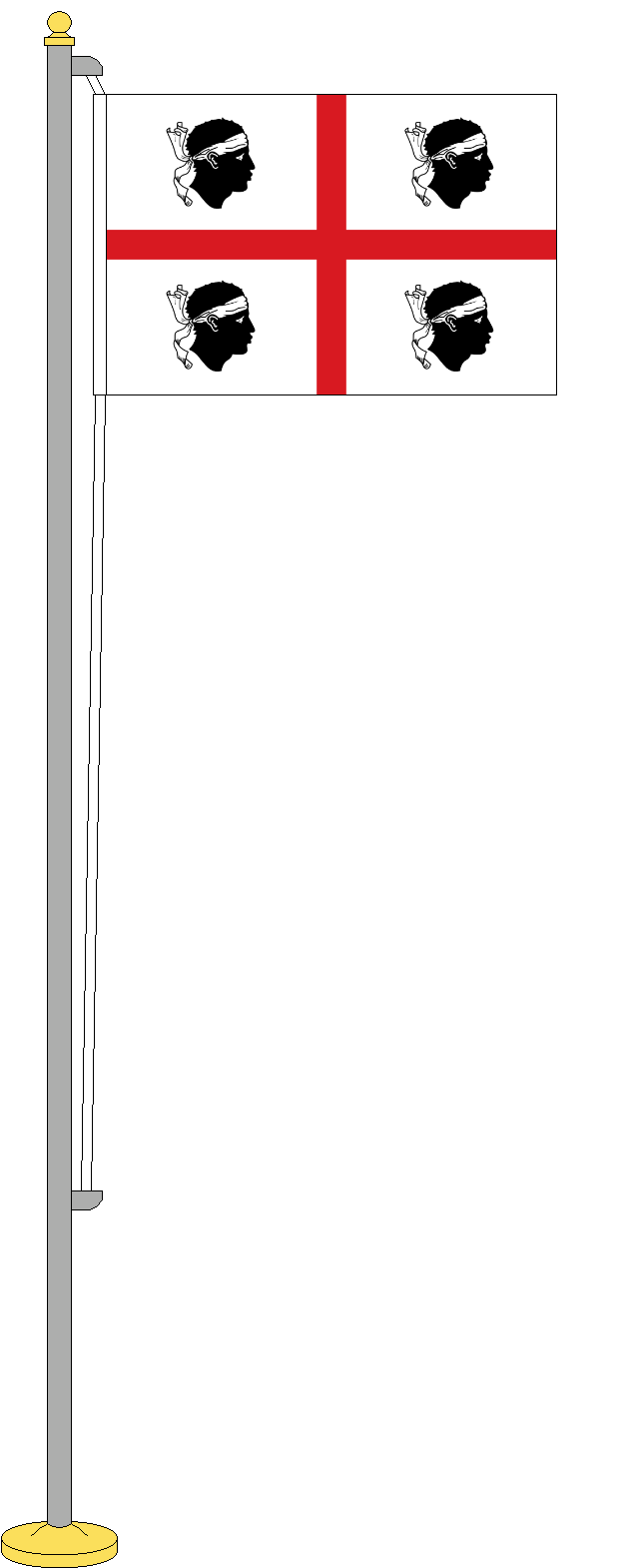
Flag of Sardinia by Al3ssio97 on DeviantArt
0xA11ce. • 6 yr. ago. If by variant you mean that they are facing left, it is the unofficial flag of the Sardinia Autonomous region, not the island. I don't know enough about Italian politics to elaborate on why that is significant, but I suspect it's something like a regional/historical flag vs a modern political flag. 1. MAGolding.

Sardinia and Surroundings Sardinia Points Of Interest [part 1]
Beyond Sardinia, similar symbolism as the "Moor's head," is found in Corsica's flag, with only one head, and the flag of Aragon, which incorporates the symbol of the four Moors. This interconnected symbolism speaks to shared historical narratives and cultural influences. A Symbolic Tapestry Unraveled